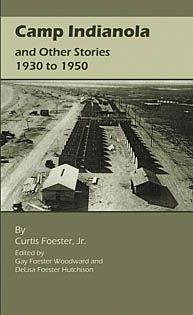


![]()
ZIMMERMAN Cemetery
Magnolia Beach, Texas
by
Mary Belle Melcher Meitzen
The Zimmerman Cemetery is located close to Indian Point between Magnolia Beach and Indianola. The Zimmerman Cemetery is located off Texas State Highway 316. The endangered cemetery has tombstones broken from cattle rubbing against them and needs fencing to prevent further damage. There is a county right of way, but the cemetery is located on private property. For family information, please contact Mary Belle Meitzen, Calhoun County Historical Cemetery Chair at 361-552-5931. The Commission is currently locating family members. The oldest marked grave is Georchim Wedig who died June 9, 1852. It is also the second oldest grave in the three cemeteries in the Indianola area.[1] The most recent marker is Charles Paul who died March 8, 1977.[2] |
Joe Mendez
"According to Chris Emmett's Texas Camel Tales, Joe Mendez, the camel driver is buried in Zimmerman Cemetery. However, note that he also says they (Joe & John Gonzales) are buried in the Old Town Cemetery." This is understandable since the Zimmerman Cemetery is just west of the Old Town Cemetery on the Ridge. [3] As of this date, there is no marker visible in the Zimmerman Cemetery with Joe Mendez's name. The marker has been lost with time.[4]Or there was never a marker in place for him. Paul Freier describes Dan Zimmerman as a person who greatly resembled his grandfather, Joe Mendez, who had come with " the Widow's Camels" to Indianola in 1858.[5]
Joe Mendez was 40 in 1880, so he was born about 1840 in Spain. According to Calhoun County marriages, Jose G. Mendez married Mary Ann Segner with license issued May 5,1862. Joe and Mary show up in the 1880 census at Old Town, Indianola (208/204) with Lizzie age 6 in the household. This is Elizabeth, who married August Zimmerman.[6]
New Book on Indianola!
John Gonzales
Juan/John Gonzales was born in Spain on April 21,1838. In 1856, (different date from Freier), He came to America with Joseph Mendez, also of Spain. John and Joseph were camel drivers that brought camels into Indianola from Egypt, the Far East, Africa, and the Canary Islands to be used by the United States Government for military use.[7] And also Linda Wolff notes, "The camels are refused by the Widow Watson. Penniless and unable to return home, Gonzales and Mendez settle at Indian Point (Old Town) where they marry, bought property, and raised their families."[8]Kate is listed as 38 years old in the 1880 Census, Old Town Indianola (197/213). Frank is listed as age 7. Other children in the family listed are:Theresa 13, Cavestannie(?) 10 female, Fermina, age 5.[9] John died on May 10, 1928 at the age of 80 years, 19 days. His wife Catherine, died on March 20, 1929, at the age of 85 years, 3 months, and one day. They are buried in the family cemetery (now called Zimmerman Cemetery). Children born to them were Frank, Blanche, John, Minnie, Theresa, and Sylvestina (Vesta) Gonzales.[10] These children's names differ from McCown's Census source.
Frank A. Gonzales
Frank A. Gonzales was born on October 19,1872 at Indianola, Texas. His parents were John and Catherine Gonzales. Frank married Annie Mendez. Their marriage license is dated June 3, 1899.[11] Annie was born on April 9,1876. To support his family, Frank was a farmer at Magnolia Beach. Three children were born to them. They are Mrs. Adolph (Mary) Yonnick, Gladys M. Gonzales who married Clarence E. Sachrison, license November 3,1930,[12]and Clarence Henry, who married Erna Lee Hudgins of Freeport, Texas. These children attended school at Magnolia Beach.
Frank Gonzales departed this life on July 16,1954. His wife,Annie, died on July 20, 1962. They are buried in the family cemetery (now called Zimmerman Cemetery) at Magnolia Beach. Their son, Clarence, born February 6, 1904, died January 11,1968, and is also buried in the Zimmerman Cemetery. The cemetery is located on the property of his granddaughter, Gladys Sachrison,[13] who also lived on the family homestead. Currently the property is owned by Clarence Gonzales and W.R. Gonzales.[14]
August Zimmerman
August Zimmerman was born in Germany on February 24,1860. He emigrated to Indianola (Old Town) where he met and married Elizabeth Mendez on August 8, 1895. She was the daughter of Joe Mendez and was born June 28,1874.They lived on land August purchased for $.25 an acre, including a lake patented to him by the state, and was just across from where "Lizzie" had gone to school at Indian Point.[15] \
In the 1880 census, August Zimmerman was listed at Indianola, not Old Town, but he must have been close as the dwelling was 186 and the family 202. Gonzales was 197/213 and Mendez was 208/224. Either way it was not far so they were neighbors.[16]
In the early 1900"s, August was foreman for the Thomas Ranch (southwest of Port Lavaca). He was a charter member, along with Ed Melcher from Port Lavaca, of the Sons of Herman Lodge, Port Lavaca Chapter #231. August died on April 9, 1930 and Lizzie died February 9, 1965. They are buried in Zimmerman Cemetery. Children included Dan George Zimmerman, Henry, Emma, and Allie.[17]
Daniel Zimmerman
Daniel George Zimmerman, born August 5, 1896. He spent his entire life on his father's land except for the years he served in the United State Navy during World War I.
Dan married Ola Kisiah, daughter of John Thomas and Sarah Elizabeth Kisiah. She was born in Port Lavaca on November 25,1896 or 1899 (tombstone date).[18] They had two daughters; both delivered by Dr. Grace. Fay Ellen Zimmerman, born December 14, 1929, married Charles Paul of West Texas. His parents were Monroe and Louise Paul. Charles worked for Alcoa. He died March 8, 1977 and is buried in Zimmerman Cemetery. Ruth Elaine Zimmerman, born March 23, 1927, married Leslie Sparks of Victoria. They have four children: Leslie Elaine, Barbara Ann, Bonnie Lynn, and Gary Wayne. Ruth resided in Victoria and is buried there.
Dan Zimmerman died October 24, 1973. Ola Zimmerman died on October 31, 1987. [19]They are both buried in the Zimmerman Cemetery. Fay Paul continues to reside at her home at Magnolia Beach on the same land purchased by August Zimmerman.
Displayed in their yard are barrel like blocks that Joe Mendez used as blocks for his house. They were formed when barrels of cement got wet when they were being shipped to Indianola. They later hardened. This is all that's left of their house, which was the last original house at Old Town. Hurricane Carla washed everything away.[20] Never before had the sea covered the twenty-foot ridge upon which the house stood. All family papers and pictures of Indianola, never duplicated or copied were lost. Only the storm debris hanging from electric utility poles or from the top of the windmill tower bore witness to the height of the tide.[21]
Zimmerman, Old Town Resident
Another view of Dan Zimmerman emerges from Paul Freier's newspaper article. Both August and his son, Dan made the family livelihood from the fishing industry. During the years that Port Lavaca was the largest shipping center for sea-food in the United States, Dan Zimmerman remembers oystering on the bay when market boats picked up the harvest to be taken for shipment. According to the Texas Almanac, Matagorda Bay possessed 30,000 acres of natural live shell reef in 1910. Zimmerman could never understand how unrestricted shell dredging was justified as being essential to the economy while the welfare of the commercial fisherman was overlooked. He also believed that the channeling on the floor of the bay would affect water currents, which could change the erosion pattern and marine life. [22]These same problems affect Matagorda Bay in 2007.[23]
Zimmerman remembered as a boy that they would kick over the edges of the bluffs in the area between Magnolia and Alamo Beach. Rattlesnakes by the hundreds that lived in the bluffs would be exposed.
Farm developments for fruit and vegetables in that area of the county never succeeded. As a boy, Dan was employed to plant thousands of fig seedlings, none of which would live for more than two or three years. About the most successful person in the fig business in 1912 was a Mrs. Preston who canned figs in 3-ounce containers for the Illinois market.
According to Zimmerman, prairie chicken, quail, and grouse covered the prairies of Powder Horn in the early 1900's and geese and ducks blackened the skies. The F.V.Gentry Company in Port Lavaca purchased green-heads and canvas-backs by the pair, which were packed in barrels and iced down for shipment by Express. Hunters procured their black powder in 5 lb.tins, and loaded their own brass and paper shells.
With the disappearance of the game and wild-life and the decline of the fishing industry, Dan Zimmerman became acutely aware of, and concerned about the environment long before it was generally understood. The bay once alive with the diamond-backed turtle was no longer habitable and the turtle disappeared. It had been seined for, and the turtles were kept in log pens in Powder Horn where they were fed to a selling weight of five founds and sold by the dozen.
The giant sea-turtle of 400-500 pounds became extinct in Matagorda Bay. From his father and from his grandfather Mendez, Dan learned that the giant turtles were kept helpless at the canneries by being turned on their back until enough were accumulated to justify firing up the boilers.[24] What happened to the old boiler of the turtle cannery at LaSalle and another boiler from a hide and tallow plant by the Humble docks at Magnolia Beach? In 2007, both had disappeared.
When researching or locating gravesites, an individual can find dates and names. Rarely do you locate an image of a person, expressing their views and feelings. Paul Freier's article gives you an insight into one of the family members buried in the Zimmerman Cemetery.[25]
The Zimmerman Cemetery is still in use today. County Commissioner Roger Galvan and the Calhoun County Historical Commission are working together to repair tombstones, but a permanent fence is needed to keep out large animals.
If you have family buried in this cemetery, please contact Mary Belle Meitzen at 351-552-5931. Working together, the past will survive the future.
mmeitzen@tisd.net
Sources:
[1] McCown, Leonard , Cemeteries of Indianola,Texas, 1979, p.71.
[2] Meitzen, Mary Belle, Field Trip, February 4, 2007.
[3] McCown, Leonard, p.171
[4] Meitzen, Mary Belle, Field Trip, February 4, 2007
[5] Freier, Paul, Karankawa Kountry,Vol. 16, 1994, P.81.
[6] McCown, Leonard J., email, October 11,2007.
[7] Calhoun County Historical Commmission Shifting Sands, p.159.
[8] Wolff, Linda, Indianola and Matagorda Island 1837-1888, p.37.
[9] McCown, Leonard, email, October 11, 2007
[10] Ficklen, Lonnie, Sifting Sands, p.159, Interview with Gladys Sachrison, John Gonzales' granddaughter.
[11] McCown, Leonard, email, October 11,2007.
[12] Ibid.
[13] Ficklen, Lonnie, Shifting Sands, p.159.
[14] Calhoun County Appraisal District, R40427, Sept.20,2007.
[15] Freier, Paul, Karankawa Kountry, Vol.16, 1994, P. 79
[16] McCown, Leonard, email, October 11,2007.
[17] Ibid
[18] Meitzen, Mary Belle, Field Trip, February 4, 2007
[19] Ibid.
[20] CCHC, Shifting Sands, By Lonnie Ficklen and Fay Paul, p.288.
[21] Frier, Paul, Karankawa Kountry, Vol.16, 1994, p.80.
[22] Ibid, p.79.
[23] Meitzen, Mary Belle, personal viewpoint. October 9, 2007.
[24] Freier, Paul, "Zimmerman, Deceased Old Town Resident Was One of Last Old Indianola Settlers", Port Lavaca Wave, Nov. 1, 1973
[25] Meitzen, Mary Belle, personal observation, Oct. 9, 2007.
Copyright 2006-22 - IndianolaTx.com
Ccontact gary@indianolatx.com